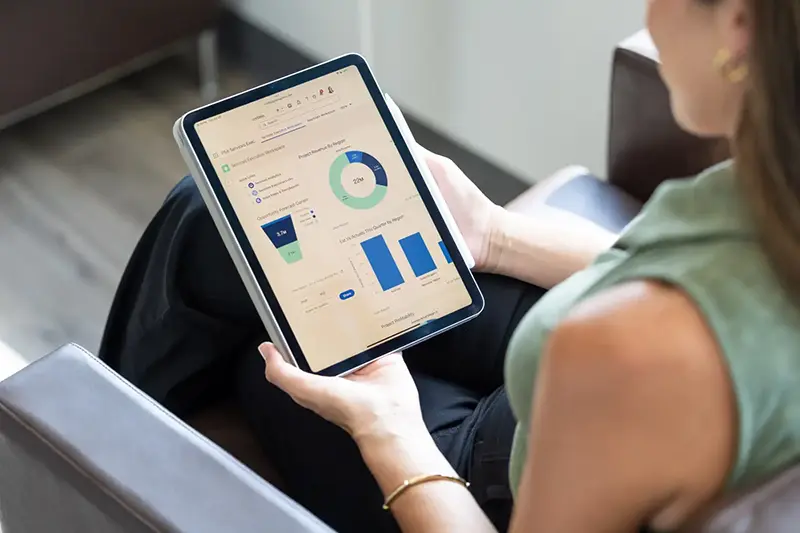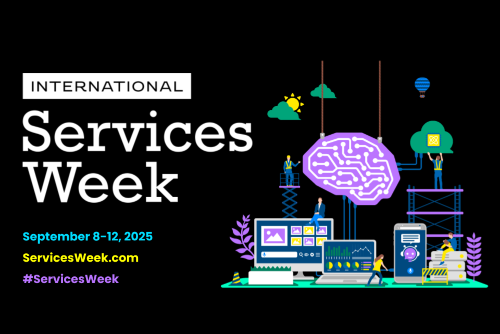Are your sales and finance teams connected in the right way?

When disconnects arise between finance and sales, it is rarely about the people involved and almost always about the processes, systems, and data. Sales and finance are essentially focused on the same goals, which are to drive revenue and to win and keep customers. But too often, these teams are not collaborating to achieve these goals because they are working on different systems and not communicating. In a world where customer experience and retention have never been more important, a situation like this could be detrimental to your business. What’s the solution?
The one-office formula
Sales and finance teams need to come together as one with a joint purpose and collaborative mindset. The best way to accomplish this is by having them operate from the same system, where they can properly communicate, share information, and stay connected across the entire customer experience. Without a connected system, finance and sales teams are left to slog through a confusing web of mismatched spreadsheets and bolt-on customer record systems. At critical times when access to accurate information is vital, both these teams are left with questionable data that can ultimately harm the business.
The good news is that modern cloud technology is built to solve this problem. By uniting your CRM and finance systems on a modern cloud infrastructure, you will be able to eliminate disconnects and create a “one-office” approach, where everyone is working with and sharing key data in a unified fashion. Instantly, your teams are armed with the right information at the right time to better serve your customers and your business. When done right, amazing things can happen and we’ve listed a few below.
The master customer record
After connecting the front and back office, to create the ‘one office’ you can establish a master customer record from which everyone works. Customer orders, project milestones, billing events, and accounting details are now all in one place so your accounts receivable team has everything it needs to bill faster, collect sooner, and increase collaboration with sellers. Instead of waiting days or even weeks for teams to be in sync, everyone from sellers to accountants can do their work with the same view of critical customer data, reducing errors and delays. With a master customer record, you can also generate an invoice straight from a sales opportunity, speeding up the billing processes.
By using a master customer record in this way, organizations like Methods have seen a 40% reduction in back office costs.
Customer-centricity built-in
Consolidating around the customer now also gives specific team members access to the details and insights they need to work together more effectively and make decisions with certainty. For example, accounts receivable might decide not to pressure a customer for the next payment if they see a large sale pending with the account, electing to defer the issue to sales. Or the support team might spot an ongoing service issue that should be resolved before bothering the customer with “past due” notices. Sales, for their part, can become an extension of finance, bringing up invoices during a sales/service call.
Real-time transparency
Instead of waiting days or even weeks for teams to be in sync, everyone from sellers to accountants can do their work with the same view of critical customer data. Sales will always know what’s going on with their customer vitals–financials, projects, and inventory to answer any question and provide immediate, high-quality support. At the same time, financial leaders gain a wealth of data with which to develop strategic insight into things like pipeline, pricing adjustments, contract amendments, service delivery tracking, and more–all of which lead to amazing customer service.
Reporting made easy
With a united CRM and finance system, you’re now managing only one customer dataset, making reporting easier, faster, and more accurate. More importantly, you are bringing customer, financial, and operational data together to achieve a 360 business view. You will be able more easily derive of the cost of doing business, cost of sale, cost to serve, and customer total lifetime value.
Companies like digital media giant FCR media are calling these 360-views game-changing.
One record to update
No more losing precious hours entering data in multiple places. When you update a contact, a vendor, a product, or an account–that update can be made everywhere. You will also get record sharing, a single reporting database, common administration, and unified toolsets that form a truly holistic environment for users. Not only do you save time, you elevate accuracy and peace of mind.
Want to learn more about running a connected business? Download this eBook and learn what it can do not just for sales and finance, but for your entire organization.
Recent Articles
Maximize your Salesforce investment with Certinia






